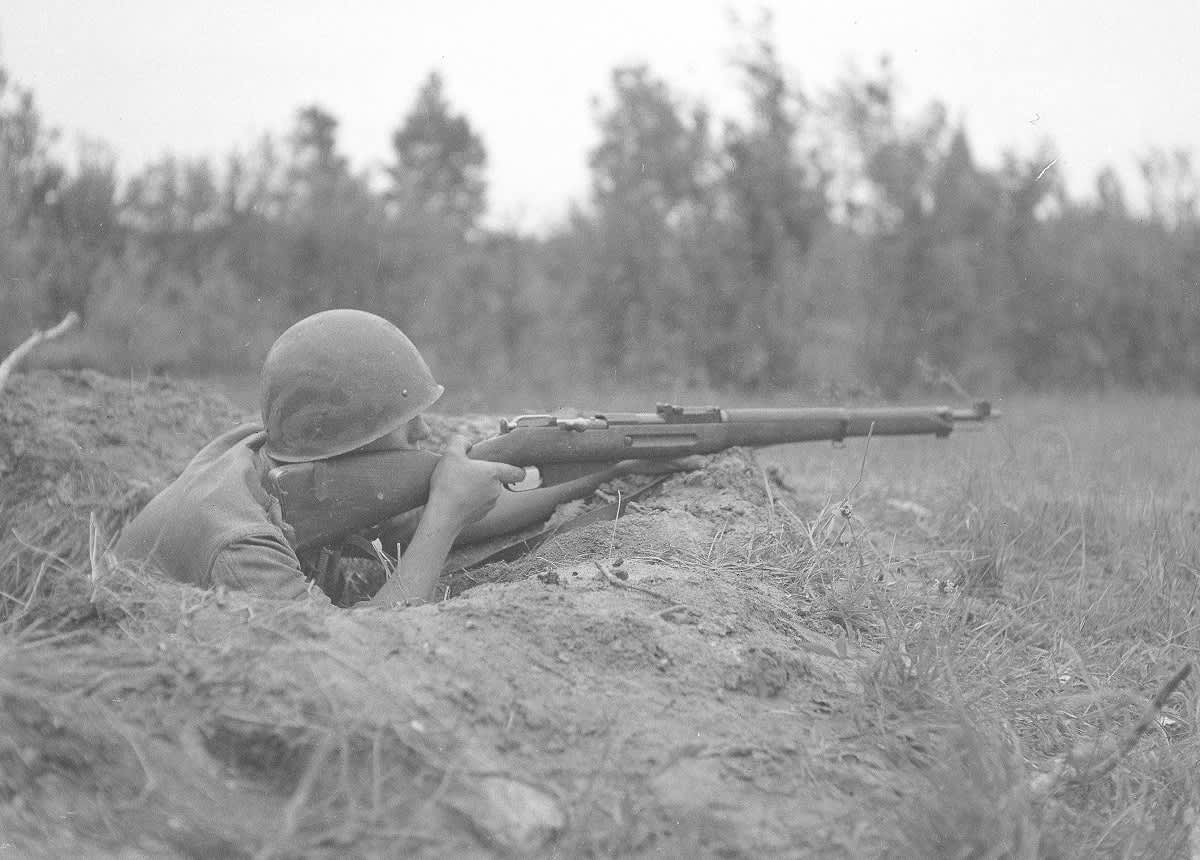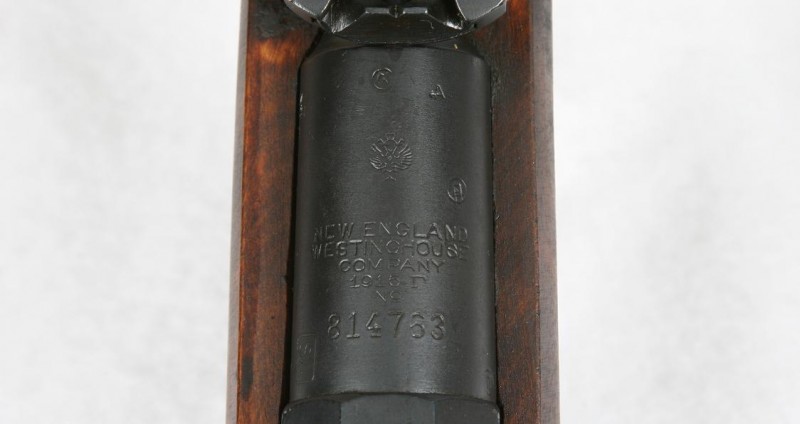Story of a Gun: An American Mosin
Matt Korovesis 09.27.11

With each day that passes, we lose living links to the past—those personal accounts of history and historic events that defined generations or steered nations down one path or another. Just this February, the last living American veteran of World War One passed away. As painful as it is to say, we will soon bear the loss of the last veterans of World War Two, the Korean War and other conflicts.
Though we may lose the people who are the most important and dear connections to history, we can still remember them, their struggles and the events they took part in through other means. Books and museums are obvious and usually excellent referential resources. However, for people like me, there are other means as well: the artifacts left behind from those eras in which great events in history took place. More specifically, old military surplus firearms from the turn of the century forward represent to me the implements of history through which we can learn and remember.
It is with these thoughts in mind that I picked up my most recent antique firearm purchase from my FFL dealer, an American made Mosin-Nagant (hereafter referred to as Mosin) rifle that’s come full circle in its journey through time and conflict.

This particular rifle began its life as a Model 1891 Infantry Rifle in the New England Westinghouse (NEW) armaments factories in Chicopee Falls, Massachusetts sometime between 1915 and 1918. At the outset of World War One, the Tsarist Russian government, finding (as so many other European countries did) that its armed forces were critically short of small arms given the unprecedented amount of casualties, the scale of mass conscription and weapon loss rate, contracted with two American companies to manufacture Mosin rifles for use in the Imperial armed forces.
One of those companies was New England Westinghouse, which probably made some of the common appliances you use in your home. The other was Remington Arms Company, the same Remington that continues to make top quality firearms to this day. Though some 840,310 Remington and 770,000 NEW rifles had been made by 1917, only 131,400 Remington and 225,260 NEW Mosins made it to Russia by the start of 1917, according to Terence Lapin.
This rifle was one of those 225,260 that made it to Russia by the time of the February Revolution (March in the modern, Gregorian calendar—the Russian government used the Julian calendar until after the Bolsheviks took over) in early 1917. At that point, the Russian government defaulted on the contract and shipments stopped or slowed greatly.
In one way or another, this rifle was present for the tumultuous period of the Bolshevik October revolution later in 1917 and Russia’s exit from World War One. It had most likely been issued to Imperial troops in Finland or assigned to the arsenal in Helsinki, the capital of Finland, where it fell into the hands of the new Finnish state that emerged after the October Revolution in Russia.

Prior to the Bolshevik revolution, Finland was part of the Russian Empire. Right after the Bolsheviks seized power in Russia proper, Finland declared its independence and subsequently experienced its own Civil War between Red and White forces. Unlike their counterparts in their gigantic neighbor who lost out to Bolshevik despotism (not to say that some Whites in Finland and Russia were not fighting for a despotism of their own), the Whites triumphed in Finland and founded an independent republic.
By the mid to late 1930s, the Soviet government began to seriously pursue its ambitions of reuniting the former territories of the Russian Empire that had broken away in the midst of the revolution and had not yet been brought back into Moscow’s fold. One of these targets was Finland, from which the Soviets sought territory and military bases. After a cursory attempt at diplomacy, the Soviet Union invaded Finland in November 1939 to push its territorial claims. The Finns resisted, resulting in a brief but vicious conflict known as the Winter War. The Finns held out until March 1940, humiliating and severely thrashing the numerically and technologically superior Red Army enough to earn their nation’s continued survival at the expense of some territorial concessions.
Given the desperate situation Finland found itself in at the outset of the Winter War, this rifle is guaranteed to have seen service in that struggle. Exactly what capacity it was used in cannot be certain, as there are no specific unit marks on the gun.

Following the end of the Winter War, Finland experienced roughly a year of peace. The Soviets occupied and effectively annexed the Baltic states of Lithuania, Latvia and Estonia in the summer of 1940, showing just exactly what was in store for the Finns, had they not resisted. May and June of 1940 saw the Nazi invasion and occupation of France as World War II began in earnest.
It was not long, however, before Russia and Finland found themselves again at war. Nazi Germany invaded the Soviet Union and its occupied territories on June 22, 1941, opening up the Eastern Front of World War II. Finland joined the German side as a co-belligerent (not an ally), sallying forth from their post-Winter War borders and allowing German troops to pass through their territory. This period of Finnish participation in World War II is referred to as the Continuation War.
Though the temptation was strong, the Finns never advanced past their pre-Winter War borders, refusing to assault Leningrad (now St. Petersburg) in concert with the Germans and occupy more Russian land. A government with such integrity as the war-time Finnish government is a rare thing in history. This Mosin m/91 is very likely to have seen usage in the Continuation War as well.

Finland’s involvement in World War II lasted until 1944, long after the war in the east had begun to swing in Russia’s favor. A Soviet offensive in the summer of 1944 reversed many of the Finnish gains (though not all, and it was halted in July) and a separate peace between Finland and the Soviet Union was concluded in September. The Finns were again reduced to their 1940 borders and forced to accept further concessions, but maintained their independence—something that cannot be said for every nation that fought the Soviets in World War II.
In sum, this rifle was party to revolutions, civil wars, two World Wars and one other conflict. Through it, a people’s independence and liberty were fought for and won. Its path took it from America to Imperial Russia, to Finland and finally back to its origin, this time in the hands of collectors rather than workers or warriors. As we march forward in time and lose our living links to the past, we remember history through the artifacts and literature that remain. This m/91 Mosin-Nagant rifle is one of these artifacts, and it is our duty as collectors and historians to recognize them for the part they played in our past.
Photos courtesy of Marty Abrin of Classic Photography. To read my other pieces on Mosin rifles, click here for the Soviet Model 91/30 and click here for the later Finnish m/39. Featured thumbnail image from SA-kuva.


